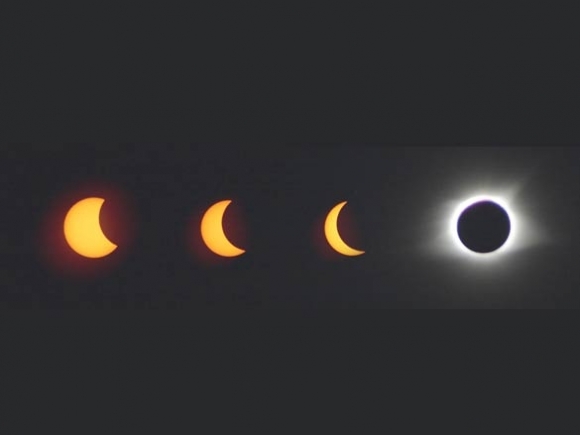There were the camera bag, computer, notebook and array of reporter paraphernalia that I’d bring to any big assignment, but I also had enough food to last for a day or two, a couple gallons of water and a pack filled with camping gear should the worst forecasts of vehicular gridlock prove true. My gas tank was full to the brim, and for an event that didn’t start until noon 50 miles away, I was leaving town at 7 a.m.
All that because on this day — Aug. 21, 2017 — the sun was going to disappear for 86 seconds from the sky above Clingmans Dome in the Great Smoky Mountains National Park, and nobody could predict what sort of craziness might ensue.
As I drove sun rose with a brilliance that belied its impending disappearance. The roads remained miraculously clear all the way to the media parking lot on Clingmans Dome Road, and even at eight-something in the morning the place was abuzz with ticketholders and park staff. Before long, beach blankets, hammocks and fold-up chairs covered the sidewalks and grassy spots of the parking-area-turned-event-center, every conversation full of anticipation of the solar event to come and worry, accentuated by necks craned upward, that the clouds flirting with the sky could eclipse the eclipse.
I expected something dramatic to happen the instant the clock turned to 1:06 p.m., when the eclipse was to begin. Nothing felt different, at least not immediately, but my camera — set up at the top of Clingmans Dome Tower — showed proof of the cosmic event now unfolding. I could see it on the screen, the rounded edge of the moon butting into the sun’s smooth disc, making it look like a partially eaten cookie.
It was a little after 2 p.m. when the coolness set in — not the cool of shade on a hot day, but rather the calming coolness of evening, complete with deepening shadows in the mountains and pinkish hues in the clouds.
Related Items
There was sunset, and then there was night. A strange night, hung not with a moon but with a shimmering, light-encircled black disc — the rare, unearthly sight of the moon covering the sun.
It takes a lot to impress a roomful of journalists. We’re trained to be skeptical, even-minded and maybe a little jaded. But there wasn’t one person on the Clingmans Dome Tower media post that day who didn’t let out repeated gasps and words of awe, or feel their heartbeat quicken, or just stand in dumbstruck silence as totality passed.
The corona was gone, it seemed, almost as soon as it had appeared, the first shaft of sunlight creeping around the moon sufficient to erase the quasi-night that the eclipse had caused. Suddenly it was sunrise, previously silent birds singing morning greetings from the trees down below.
I could still feel the wonder of what I’d seen glowing somewhere in my chest, awe of creation resonating within me. This whole day had been billed from the start as a once-in-a-lifetime experience, but there was one thing I knew with certainty — I wanted to see it again.




